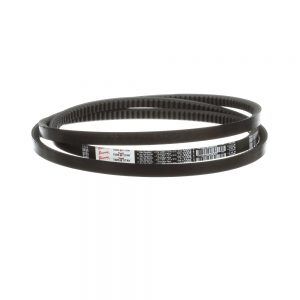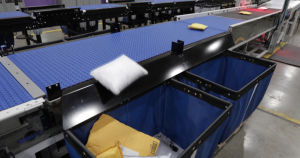Ask These 10 Questions to Innovate with Purpose
Regal Beloit Examines Product Design in the PT and Motion Control Industry
Too frequently a product is developed and then the manufacturer looks for a market or a customer or an application. The results are predictable: the product doesn’t sell well, or customers are dissatisfied because the performance of the product falls short of their requirements.Better outcomes for manufacturers and the end users can be achieved when engineers gain a deep understanding of the marketplace and customers’ unmet needs before they design products. That’s the best way to ensure product features, functionality and materials are well suited for real-world conditions.
Some companies have adopted blueprinting techniques from Dan Adams, president of The AIM Institute, and author of New Product Blueprinting: The Handbook for B2B Organic Growth. It’s helpful to prepare design engineers and sales representatives to lead customers through frank conversations that reveal the problems customers want to solve. Blueprinting is especially helpful when working with companies in rapidly changing industries such as retailers because of the impact of booming ecommerce orders on materials handling in distribution and fulfillment operations.
Teach teams to ask thought-provoking, open-ended questions. It’s important to understand what keeps manufacturers, retailers and third-party logistics providers up at night. You want to learn what’s preventing them from achieving short-term production targets and long-term business objectives. That’s how to uncover the requirements and limitations customers and suppliers must address. And it’s absolutely the best way to innovate product design with purpose.
To get there, ask the following 10 questions. And then listen. These are crucial steps before the design engineers and sales reps ever mention products or recommend equipment and systems.
- What Trends Are You Seeing?
Talk with a cross-section of the customer’s organization — engineering, operations and sales — to learn how their marketplace is changing and where it’s heading. Rapidly moving requirements frequently mentioned include:
- Longer equipment life
- Shifting packaging handling needs
- Safety rules
- Social distancing guidelines
- What Trends Are Your Customers Seeing?
Listen for how well customers understand their markets as well as how changes faced by their end users differ from what their own organization is experiencing. All of the trends mentioned above come up along with new topics such as:
- Labor shortages
- Better performance
- What Problems Do You Face?
This question usually elicits quick responses, because every day customers have problems that demand their attention including:
- Spare parts availability
- Engineering and field support from suppliers
- Fast quotes from suppliers
- On-time delivery of orders
- What Are Your Future Plans and Business Goals?
Every business has ambitions and objectives; we need to understand the direction customers want to go in these areas:
- Cost reductions
- Capabilities or services
- Expansion and diversification
- What’s Your Outlook on Business for the Next Three to Six Months?
Ask customers to choose one of these descriptions of their near-term expectations:
- Positive
- Really Concerned
- Slightly up
- Slightly down
- What’s Your Outlook on Business for the Next 12 to 24 Months?
Also ask customers to choose one of the words listed above to describe their expectations for what’s ahead during the next two business years.
- What Goals Are You Trying to Achieve Today?
You want to listen for financial and operational objectives such as:
- Increase throughput
- Optimize ecommerce
- Raise profitability
- Better manage inventory
- What’s Your Current State?
With a customer’s immediate goals in mind, probe to find out:
- How is their organization performing against the objectives?
- Which goals are they achieving and what’s preventing them from accomplishing others?
- What’s Your Ideal State?
This question often reveals long-term goals as well as strengths and weaknesses compared to competitors and market opportunities. Responses typically include:
- Clearly differentiated in the market
- Few or no field issues
- Meet all client timelines
- How Can We Help You?
Customers’ answers to this last question often create the opportunity to introduce a product or system, but it’s good to wait to talk about those until after the customers specify what they have in mind.
The Incredible Power of Questions

The first case involves the traditional technology of a V-belt. Nothing could be more of a commodity, yet when we interviewed HVAC equipment manufacturers, they told us that the V-belts available at the time from us and other suppliers fell short of their expectations. What would help them? V-belts that didn’t need to be re-tensioned or replaced in hot weather. They wanted V-belts that produced less noise and vibration and also to reduce the total cost of ownership.
Our company responded to the feedback by reimagining the tried-and-true V-belt; using minimal-stretch cord technology and a proprietary cord treatment process, we created the industry's first no-maintenance V-belt., the Browning TorqTitan V-belt. Unlike conventional belts, this V-belt does not suffer from severe tension decay in the first hours after installation. As a result, run-in periods and re-tensioning are eliminated. No re-tensioning also means no unexpected machine or production downtime. That’s innovation with a purpose.

Conventional conveyance systems relied on old technologies such as pusher arms and pop-up diverters to sort and re-direct packages. Customers mentioned that pusher arms create safety hazards and pop-up diverters can leave large gaps between packages along the conveyor route. These are challenges piled on top of growing demands to keep up with the rapid ecommerce order growth.
Innovating with a purpose led design engineers to consider how to address the difficult task of diverting and sorting the increasing volume of ecommerce orders as well as the variety of packages that now range from boxes to polybags and jiffies and even flat items as small as three inches by three inches. This solution incorporates conventional belts and rollers but mashes them up with a novel system of balls and controls that enable the ModSort module to redirect any package type while also eliminating pusher arms and closing gaps between packages.
Get Comfortable Asking: What’s Next?
Understanding the problems that customers are trying to solve requires asking a lot of questions. Currently these conversations are conducted with phone calls and video conferencing. Soon everyone will again be able to visit customers on-site to see in addition to hear what’s needed.
Whether it’s done virtually or in-person, the end goal is the same. Customers don’t need a copy of a product that already exists. They need the next big idea. Recognizing that gives us the purpose to innovate.
www.regalbeloit.com

About the author: Brad Gossard is vice president/general manager PTS Conveying at Regal Power Transmission Solutions.



